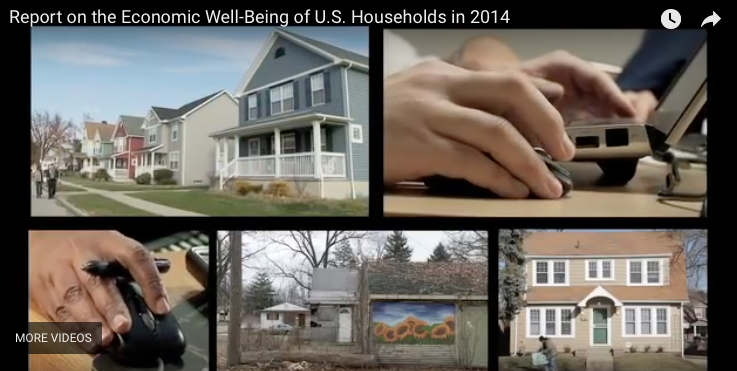Washington, D.C. – The Federal Reserve Board conducted its second annual Survey of Household Economics and Decision-making, also called the SHED Survey, in October 2014.
The Fed’s Director of Consumer and Community Affairs, Eric Belsky, believes that, “It gives the Federal Reserve an opportunity to ask consumers questions directly and with relatively quick turnaround, so that we can make evidence of what consumers are thinking public on a wide range of activities in their financial and economic lives.”
Overall, the survey found that most adults are faring relatively well, although some individuals are struggling to get by. Also, there are concerns in key areas, such as the availability of work. David Buccholz, assistant director of Consumer and Community Affairs at the Federal Reserve Board, observed that there is demand for more work if it was available. “We asked people if they’d prefer to work about the same number of hours as they’re working now, more, or fewer if that work were available at the same rate of pay,” said Buchholz. “And about a third of full-time workers and half of part-time workers tell us that they’d prefer to work more hours if they could.”
“About a third of full-time workers and half of part-time workers tell us that they’d prefer to work more hours if they could.”
The survey found that financial hardships are common, yet many people are not prepared for them. “When faced with a $400 emergency expense, we find that almost half of respondents would either not be able to cover that expense or would do so by borrowing money or by selling something,” Jeff Larrimore, an economist at the Federal Reserve Board, noted. “So even though many respondents to the survey are doing okay. Financially, we find this to be a sign that many are ill-prepared for some sort of even relatively modest disruption.”
“Many are ill-prepared for some sort of even relatively modest disruption.”
The SHED survey also found that the perceived value of post-secondary education varies widely. Most respondents in the survey who went to college believe that the education was worth the cost and are able to successfully repay their student loans. “But we find that there’s a number of factors that influence whether people are able to repay that debt,” Larrimore explained. “In particular, respondents who either went to a for-profit institution or who failed to complete a college degree are more likely to say that the education wasn’t worth the cost and are more likely to have fallen behind on their student loan payments.”
“Respondents who either went to a for-profit institution or who failed to complete a college degree are more likely to say that the education wasn’t worth the cost.”
Across a range of topics, lower-income respondents showed higher rates of financial challenges. “So, for instance, among those earning $40,000 or less in a year, less than half of them were able to put anything away in the previous year,” said Buchholz. Additionally, the survey revealed that lower-income people are disproportionately likely to be saving for either emergency purposes or other short-term goals as opposed to longer term goals such as retirement.
Among individuals who are able to save for retirement, many respondents feel they lack the ability to manage their savings. Buchholz has observed a long-term shift in terms of retirement savings increasingly being in self-directed accounts such as 401k’s or IRA’s. “We asked people how confident they are in being able to manage those funds,” Buchholz said. “And about half of people tell us that they feel either not confident at all or only a little bit confident in their ability to manage their funds well.”
“About half of people tell us that they feel either not confident at all or only a little bit confident in their ability to manage their funds well.”
As a nationally representative snapshot of economic well-being, the results of the SHED indicate a hopeful trend for U.S. households. Anna Boyd, senior associate director of Consumer and Community Affairs at the Fed pointed to how the survey revealed that people are generally optimistic about their long-term financial future. “And, it says a lot about people’s ability to bounce back when they feel so strongly that things will get better as we move forward,” observed Boyd.
“It says a lot about people’s ability to bounce back when they feel so strongly that things will get better as we move forward.”
This year’s full report is available to view or download on the Federal Reserve’s website.
Video producing, editing, voice over, and writing by Amanda Mosher
